|
Amazon has launched a new feature called "Tailored Audiences" that allows sellers to contact customers directly via email. This feature has been long-requested by sellers, and it is expected to help them build stronger relationships with their customers and increase sales. How Tailored Audiences WorksTailored Audiences allows sellers to create targeted email campaigns for customers who have already shown an interest in their products or brands. Sellers can target customers based on a variety of factors, such as:
Sellers can use Tailored Audiences to send customers emails about new product announcements, sales, promotions, and other relevant information. Sellers can also use Tailored Audiences to collect feedback from customers and build stronger relationships with them. Benefits of Tailored AudiencesTailored Audiences offers a number of benefits for Amazon sellers, including:
How to Use Tailored AudiencesTo use Tailored Audiences, sellers must first create a Brand Registry account. Brand Registry is a free program that helps brands protect their trademarks and intellectual property on Amazon. Once sellers have created a Brand Registry account, they can start creating Tailored Audiences. To create a Tailored Audience, sellers need to choose a targeting criteria and select the customers they want to target. Sellers can also set a budget and schedule for their email campaigns. Once a Tailored Audience has been created, sellers can start sending emails to their customers. Sellers can use Amazon's built-in email templates or create their own custom templates. Best Practices for Using Tailored AudiencesHere are some best practices for using Tailored Audiences:
Parting ThoughtsAmazon's new Tailored Audiences feature is a powerful tool that can help sellers build stronger relationships with their customers and increase sales. By following the best practices outlined above, sellers can use Tailored Audiences to achieve their business goals.
TikTok Shop is a new ecommerce platform that was launched in the United States in September 2023. It is integrated into the TikTok app, which means that users can discover and purchase products directly from the app without having to leave. TikTok Shop offers a number of features that make it attractive to ecommerce sellers, including:
TikTok Shop is still in its early stages of development, but it has the potential to be a major player in the ecommerce market. For ecommerce sellers, TikTok Shop offers a new opportunity to reach a large and engaged audience of potential customers. How Tik Tok Shop Can Benefit Ecommerce SellersHere are some of the ways that TikTok Shop could benefit ecommerce sellers:
Shopify Integration with Tik Tok ShopShopify and TikTok have partnered to make it easy for Shopify merchants to sell on TikTok Shop. Shopify merchants can integrate their Shopify store with TikTok Shop in a few simple steps. Once their store is integrated, merchants can start selling their products on TikTok Shop directly from their Shopify dashboard. Here are some of the benefits of integrating your Shopify store with TikTok Shop:
Tips for Selling on Tik Tok ShopHere are some tips for selling on TikTok Shop:
By following these tips, you can increase your chances of success on TikTok Shop. Amazon has launched a new enterprise-level warehouse fulfillment scanner called the Veeqo Scanner. The scanner is designed to help sellers manage their own inventory and shipping more efficiently. The Veeqo Scanner is a lightweight, handheld device that can be used to scan barcodes, QR codes, and RFID tags. It can also be used to print shipping labels and track inventory levels. The Veeqo Scanner integrates with Veeqo's shipping and inventory management software, which gives sellers a complete view of their inventory and orders. This allows sellers to quickly and easily pick, pack, and ship orders. The Veeqo Scanner is also compatible with a variety of other shipping software platforms, including Amazon Seller Central. This makes it easy for sellers to use the scanner to fulfill orders from all of their sales channels. Benefits of the Veeqo ScannerThe Veeqo Scanner offers a number of benefits to sellers, including:
Amazon's 5% Discount for Eligible ShipmentsAmazon is offering a 5% discount on eligible shipments to sellers who use the Veeqo Scanner. This discount is available to sellers who ship at least 100 orders per month. To qualify for the discount, sellers must register for the Veeqo Scanner program and purchase a Veeqo Scanner. Once registered, sellers will receive a discount code that they can use to redeem their discount on eligible shipments. The 5% discount on eligible shipments can help sellers to save money on shipping costs and improve their profitability. Key TakeawaysOverall, the Veeqo Scanner is a powerful tool that can help sellers to manage their inventory and shipping more efficiently. The 5% discount on eligible shipments offered by Amazon makes the Veeqo Scanner an even more attractive option for sellers.
The Digital Millennium Copyright Act (DMCA) is a United States copyright law that provides protection for copyright holders against copyright infringement. The DMCA also established a "notice-and-takedown" system, which allows copyright holders to notify online service providers (OSPs) of infringing content hosted on their platforms. OSPs are then required to remove the infringing content or disable access to it. While the DMCA has been effective in reducing copyright infringement online, it has also been abused by some copyright holders and their agents to have legitimate content removed from online platforms. This is known as an illegal DMCA takedown request. Illegal DMCA takedown requests can be motivated by a variety of factors, such as:
Illegal DMCA takedown requests can have a number of negative consequences, including:
Shopify's LawsuitIn October 2023, Shopify filed a lawsuit against an unknown defendant for sending numerous false DMCA takedown requests. The takedown notices targeted listings on a variety of shops selling perfume products, claiming that they infringe copyright. Shopify claims that the takedown notices were not legitimate and were instead being used to harass the company and its merchants. Shopify is seeking damages from the defendant and an injunction to prevent them from sending any further false DMCA takedown requests. ConclusionShopify's lawsuit highlights the growing problem of illegal DMCA takedown requests on online platforms. These requests can have a devastating impact on legitimate businesses and can create a chilling effect on free speech.
It is important to be aware of this problem and to take steps to combat it. If you receive a DMCA takedown request, you should carefully review the request to determine whether it is legitimate. If you believe that the request is illegitimate, you can file a counter-notice with the online platform. You may also want to consider consulting with an attorney to discuss your options. AMZ Sellers Attorney® is always available for a free consultation, 24 hours a day, 7 days a week.  Why Hiring an Attorney-Assisted Amazon Appeals Service is the Best Way to Get Your Account Reinstated If your Amazon seller account has been suspended, you may be feeling lost and frustrated. You know that you need to appeal the suspension, but you're not sure where to start or how to write an effective appeal. That's where an attorney-assisted Amazon appeals service can help. These services have a team of experienced attorneys who specialize in Amazon law. They can help you to understand why your account was suspended and write an appeal that addresses all of Amazon's concerns. Here are some of the benefits of hiring an attorney-assisted Amazon appeals service:
Attorney-Assisted Amazon Appeals Services Are Comparable in CostAttorney-assisted Amazon appeals services may seem expensive, but they are actually comparable in cost to non-attorney assisted appeals services. This is because attorney-assisted appeals services have a high success rate. In most cases, they are able to get their clients' accounts reinstated on the first appeal. This means that you will save money in the long run by hiring an attorney-assisted appeals service. What Attorney-Assisted Amazon Appeals Services Can ProvideAttorney-assisted Amazon appeals services can provide a wide range of services, including:
How AMZ Sellers Attorney® Can HelpAMZ Sellers Attorney® is a leading attorney-assisted Amazon appeals service. We have a team of experienced attorneys who have helped thousands of Amazon sellers to get their accounts reinstated. We offer a variety of services, including:
Correcting Listing Content When an ASIN Has Been RestrictedIf your Amazon ASIN has been restricted, it means that Amazon has determined that your listing violates one of their policies. This can be a frustrating experience, but it's important to remember that Amazon is just trying to protect its customers and ensure a positive shopping experience. One of the best ways to get your ASIN reinstated is to correct any listing content that is in violation of Amazon's policies. This may involve removing keywords, images, or other content that is prohibited. How to Correct Listing ContentHere are some steps you can take to correct your listing content when your ASIN has been restricted:
Amazon will review your updated listing and let you know if it has been reinstated. If your listing is not reinstated, you can contact us for professional help. Tips for Correcting Listing ContentHere are a few tips for correcting listing content when your ASIN has been restricted:
ConclusionReinstating a listing is not a simple matter. It requires delving into the root causes of the restriction, correcting the listing detail page, and submitting an appeal to Amazon to reinstate your listing. Here at AMZ Sellers Attorney® we are experts at reinstating seller listings. Call, chat or submit your case now to us for a free consultation.
What are black hat attacks?Black hat attacks are unethical and sometimes illegal tactics that malicious actors use to gain an advantage over their competitors. In the context of Amazon selling, black hat attacks can include things like:
How do innocent sellers get blamed for policy violations?Black hat sellers can often make it look like innocent sellers are violating Amazon's policies. For example, a black hat seller might hijack a listing and then start selling counterfeit products. If Amazon catches wind of this, they may suspend the listing and the innocent seller's account. Another way that black hat sellers can blame innocent sellers is by filing false infringement reports. If a black hat seller thinks that your product is infringing on their trademark, they can file a report with Amazon. If Amazon believes the report, they may suspend your listing or even your account. We have seen many black hat methods, such as ordering and cancelling many orders to make it appear the innocent seller is manipulating sales, ordering then falsely reporting items as defective or counterfeit, placing infringing images on a seller's listing, manipulating reviews or adding false negative reviews to seller's products. How to protect your seller account and listings from black hat attacksThere are a number of things that you can do to protect your seller account and listings from black hat attacks:
What to do if you've been the victim of a black hat attackIf you've been the victim of a black hat attack, the first thing you should do is contact AMZ Sellers Attorney®. We can help you to reinstate your listing or deactivated account. You should also collect evidence of the attack, such as screenshots or emails. This evidence can be helpful if you need to appeal a suspension or ban. ConclusionBlack hat attacks can be a serious problem for Amazon sellers. However, there are a number of things that you can do to protect yourself. By following the tips above, you can help to keep your seller account and listings safe from black hat attacks. If your account or listing has been deactivated due to a black hat attack, call, chat or submit your inquiry to us for a free consultation.
In today's competitive marketplace, it is more important than ever for sellers to maintain adequate records showing their supply chain for Amazon. This is because Amazon has strict policies in place to ensure that all products sold on its platform are authentic and compliant with all applicable laws and regulations. Failure to maintain adequate supply chain records can result in a number of negative consequences for sellers, including:
Steps Sellers Should Take to Prevent Suspensions and Listing RemovalsIn order to avoid these consequences, sellers should take steps to ensure that they are maintaining adequate supply chain records. These steps include:
In addition to the above, sellers should also be aware of the following specific requirements for supply chain records:
What To Do if You Hit a Speed BumpThere is nothing worse than a listing removal, except a suspension or deactivation of course. If sellers run into issues with Amazon questioning the authenticity of their products, AMZ Sellers Attorney® can help. AMZ Sellers Attorney® is a team of experienced attorneys who specialize in helping Amazon sellers with a variety of issues, including authenticity issues. They offer free consultations to sellers who are facing these types of problems.
During a free consultation, an AMZ Sellers Attorney® will review the seller's case and determine the best course of action. They can help sellers to gather and organize the necessary documentation to support their claims of authenticity. They can also represent sellers in appeals to Amazon's legal department at no extra cost. If you are an Amazon seller who is facing authenticity issues, AMZ Sellers Attorney® can help. Contact them today for a free consultation.  Amazon's In-Person Video Interview (IPI) is a video call interview conducted by a live Amazon representative to verify the identity of the person who owns and operates the seller account. Is the IPI procedure set forth in the Business Solutions Agreement or any of Amazon's selling policies?No, the IPI procedure is not set forth in the Business Solutions Agreement (BSA) or any of Amazon's selling policies. However, Amazon takes the position it has the right to require sellers to participate in an IPI at any time. What is the IPI?The IPI is a video call interview conducted by a live Amazon representative. The interview typically lasts about 15 minutes and covers a variety of topics, including the seller's identity, business, and products. The Amazon representative will also ask the seller to provide documentation to verify their identity and business. What information and documentation are called for in the interview?The Amazon representative may ask the seller for the following information and documentation:
How Does Amazon Grade the IPI?Amazon subjectively grades the IPI as pass or fail. To pass the IPI, the seller must be able to verify their identity and business, and they must answer the Amazon representative's questions accurately and honestly. How to Prepare for an IPIHere are some tips on how to prepare for the IPI:
Tips for Passing the IPI
What Happens If I Fail the IPI?If you fail the IPI, Amazon may suspend or deactivate your seller account. You can appeal the decision, but you will need to provide additional information and documentation to verify your identity and business. Recent arbitration awards in which our supervising attorney, Kenneth Eade, represented the sellers, have stricken the IPI as an extra-contractual, post contractual termination procedure, that is not provided for in the BSA or any of its incorporated policies. Amazon can also make mistakes, so if your account is suspended or deactivated for failing an IPI, call, chat or contact us right away for a free consultation. ConclusionThe Amazon IPI is a video call interview that is used to verify the identity of the person who owns and operates the seller account. To prepare for the IPI, make sure you have all of the required information and documentation ready, practice answering common interview questions, and be prepared to discuss your business and products in detail. To pass the IPI, be honest and accurate in your answers, provide clear and concise information, be prepared to answer questions about your business and products in detail, and be respectful and professional to the Amazon representative.
California's Proposition 65, officially known as the Safe Drinking Water and Toxic Enforcement Act of 1986, is a law that requires businesses to warn consumers about products that contain chemicals known to the state to cause cancer or reproductive harm. The law applies to all businesses that sell products in California, including third-party sellers on Amazon and Walmart.com. How do third-party sellers run afoul of Proposition 65's provisions? Third-party sellers can run afoul of Proposition 65's provisions in a number of ways, including:
How Attorneys File Proposition 65 Lawsuits on Behalf of "Private Attorney Generals"Private attorney generals are individuals or organizations that file lawsuits on behalf of the public to enforce environmental laws. Under Proposition 65, private attorney generals can file lawsuits against businesses that violate the law. Typically, they will file suit against the third-party sales platform, such as Amazon or Walmart, whose contracts with sellers contain an indemnity clause, requiring you to reimburse their attorney's fees as well. These private attorney generals can be compensated for their efforts in collecting Proposition 65 fines, and their attorney's fees are also collected in the lawsuits. What Defense Costs and Attorney Fees are Involved Fighting a Prop 65 Lawsuit?The defense costs and attorney's fees involved in fighting a Proposition 65 lawsuit can be significant. In some cases, these costs can exceed the amount of any potential damages award. Attorney's fees upward of $25,000 to $50,000 or more are not unusual, and this does not include reimbursing the private attorney general's attorney's fees, which could be even more. Why is it Better to Settle Proposition 65 Cases Early?There are a number of reasons why it is better to settle Proposition 65 claims early, including:
How Can AMZ Sellers Attorney® Help Sellers Sued for Prop 65?AMZ Sellers Attorney® can help sellers who find themselves sued for a violation of Proposition 65 by:
Key TakeawaysIf you are a third-party seller on Amazon or Walmart and you have been sued for a violation of Proposition 65, it is important to contact an experienced attorney immediately. AMZ Sellers Attorney® can help you to protect your rights and interests.
Photo via Pexels Life doesn’t always go as planned. If you’ve recently lost your business because of an addiction, you know this all too well. Addiction can creep into your life slowly, and before you know it, you’re facing personal, professional, and financial devastation. But there’s hope! In this article from AMZ Sellers Attorney, we’ll discuss how you can overcome financial difficulties, address addiction, and work towards a brighter future. Understand What Went Wrong Addiction can sneak up on anyone. While it’s important not to beat yourself up about what happened, you shouldn’t overlook what went wrong. Taking responsibility and acknowledging your part in the downfall of your business is a crucial step in bouncing back and rebuilding. Once you've accepted the role addiction played in your business's demise, it's time to dig deeper. What specific business decisions, actions, or behaviors were influenced by your addiction? Understanding this can prevent history from repeating itself and ensure your next venture has the best shot at success! You may want to seek guidance from a therapist or support group for help navigating this step. Seek Help for Addiction Recovery from addiction is much easier with professional assistance. Don't hesitate to reach out to addiction counselors, therapists, or local support groups. If you’re really struggling to kick your addiction, consider getting help at a rehab center. Worried about the cost? Research local resources for treatment and recovery that offer free services. Before choosing a center, review their credentials, certifications, services, and testimonials from past patients to ensure you’re getting the best quality care. Create a BudgetWith your addiction under control, it's time to get your financial house in order. Ramsey Solutions recommends that you start by creating a budget that reflects your current situation. Identify essential expenses, such as housing, food, and healthcare, and prioritize these. You should cut back on non-essential spending while you get back on your feet. Get Started on a New BusinessJumping into your next business idea can help you move forward from this setback. Plan carefully to ensure your new business doesn’t put additional strain on your finances. For example, forming an LLC will offer a few tax advantages while protecting your personal assets. To form an LLC, take advantage of our LLC formation service, to organize your LLC in any state, at one low-cost fee. Of course, recovering from the loss of your business means finding ways to replace lost income quickly. Look for part-time or freelance opportunities in your field of expertise. Leverage your skills and knowledge to provide consulting services or freelance work while you build your new business. Make a Plan to Manage DebtDealing with accumulated debt from your business and your addiction can be overwhelming. Start chipping away at your debt in manageable chunks, starting with high-interest debts like credit cards. Don’t hesitate to contact your creditors to negotiate more manageable repayment terms if necessary. You can also explore options like debt consolidation to streamline your payments and reduce the financial burden. Be sure to talk to a financial professional if this is all new to you! Prioritize Long Term RecoveryRecovery from addiction is a lifelong journey. To ensure your long-term success, it’s important to maintain a strong support system, regularly evaluate your progress, and make necessary adjustments to your spending. Verywell Mind explains that long-term recovery may also mean establishing healthy coping behaviors so you can avoid relapse when facing your triggers. Key TakeawaysDon’t let addiction derail your dreams of entrepreneurship. By acknowledging the role addiction played in your setback, seeking professional help for your addiction, creating a budget, and exploring new income sources, you can regain financial stability and get the ball rolling on your next ecommerce project!
Has your Amazon sellers account been suspended or deactivated? Contact AMZ Sellers Attorney so we can reinstate your account and get you back in business! Fill out the contact form on our website or chat, call or email us now for a free consultation. Amazon has announced that it has reopened enrollment for its Seller Fulfilled Prime (SFP) program as of October 1, 2023. The SFP program allows sellers to independently handle the fulfillment of their products while still offering one-day and two-day delivery speeds for Prime customers. Amazon paused new seller enrollment for SFP in 2021 in order to make improvements to the program and ensure that it was meeting the expectations of both sellers and customers. Some of the changes that Amazon has made to SFP include:
Qualifications for Seller Fulfilled PrimeIn order to enroll in SFP, sellers must meet the following qualifications:
Pros and Cons of Seller Fulfilled PrimeThere are both pros and cons to enrolling in SFP. Here is a summary: Pros:
Whether or not to enroll in SFP is a decision that each seller must make based on their individual circumstances and business goals. Sellers should carefully consider the pros and cons before making a decision. Here are some additional things to keep in mind:
SFP is a powerful too, but If you are considering enrolling in SFP, we encourage you to do your research and talk to other SFP sellers to get their insights. Maintenance RequirementsCustomer serviceAll post-order contacts from Prime customers regarding Prime items will be directed to Amazon Customer Service. Amazon will provide, and have sole discretion in determining, all post-order customer service, including customer returns, refunds, and adjustments, related to Prime items. Amazon has sole discretion over whether to charge the costs of any returns, refunds or other adjustments and concessions related to Prime items to the seller's account. Sellers remain responsible for pre-order buyer inquiries and inquiries related to their products. Minimum handling timesFor orders received before order cut-off, sellers must ship same-day, one-day, and two-day orders the same day that they are received (zero-day handling time). Handling time for standard shipping to Prime customers must be 1-day or same-day/0-day. Minimum order cut-off timesSellers must configure order cut-off times to 2:00 p.m. or later local time Monday-Friday and 10:30 a.m. or later Saturday and Sundays. Offer listingsSellers cannot create separate offers for the same ASIN and list one of them as a Seller Fulfilled Prime offer and the other as a Seller Fulfilled offer without Prime. Offers on the same ASIN that have the same attributes, conditions, and condition notes are considered identical offers. Performance requirementsPerformance requirements are monitored and enforced weekly against the minimum performance thresholds. For offers and orders to Prime customers, Sellers must consistently meet the thresholds defined below for each requirement to retain their program eligibility.
Beware!If Amazon determines that a seller's actions or performance may result in harm to customer trust, violations of our terms or policies, or cause other risks to customers or Amazon, then we may, in our sole discretion, disable or remove applicable Prime item offers, Seller Fulfilled Prime eligibility, or selling privileges. If you get into any trouble, Amazon Sellers Attorney® will draft your appeal of removal of seller fulfilled prime privileges or appeal of account suspension. Just call, chat, email or submit your issue for a free consultation.
By Movieposter.com, Fair use, https://en.wikipedia.org/w/index.php?curid=52517236 Amazon has introduced a number of new badges that are designed to increase discoverability and allow for values-based buying. These badges are displayed prominently on product listings, search results pages, and other areas of the Amazon website. The New BadgesOne of the most notable new badges is the Climate Pledge Friendly badge. This badge is awarded to products that meet certain sustainability standards, such as being made with recycled materials or being certified by a third-party organization. The Climate Pledge Friendly badge is a great way for sellers to show potential customers that their products are sustainable and environmentally friendly. Other new badges include:
How to Get Amazon BadgesThe specific requirements for each badge vary, but there are some general things that sellers can do to increase their chances of earning badges:
Benefits of Amazon BadgesThere are a number of benefits to earning Amazon badges. Badges can help sellers to:
How to Get the Most Out of Your Amazon Badges
IntroductionThe Federal Trade Commission (FTC) recently filed a lawsuit against Amazon, alleging that the company has engaged in unfair and deceptive practices that have harmed its third-party sellers. The lawsuit is a significant development, as it is the first time that the FTC has taken action against Amazon for its treatment of third-party sellers. The FTC's AllegationsIn its complaint, the FTC alleges that Amazon has engaged in a number of unfair and deceptive practices, including:
The Impact on Third-Party SellersThe FTC's allegations suggest that Amazon's unfair and deceptive practices have had a significant impact on its third-party sellers. Many sellers have complained that they are unable to compete fairly with Amazon and that they are forced to accept unfair terms and conditions in order to sell on the Amazon platform. How AMZ Sellers Attorney® Can Help Affected SellersAMZ Sellers Attorney® is a law firm that specializes in representing Amazon third-party sellers. The firm has a deep understanding of Amazon's business practices and is committed to helping sellers protect their rights. AMZ Sellers Attorney® can help affected sellers in a number of ways, including:
If you are an Amazon third-party seller who has been affected by the company's unfair and deceptive practices, AMZ Sellers Attorney® can help you protect your rights. ConclusionThe FTC's lawsuit against Amazon is a significant development for third-party sellers. The lawsuit suggests that Amazon's unfair and deceptive practices have had a significant impact on sellers and that Amazon may be held accountable for its conduct.
If you are an Amazon third-party seller who has been affected by the company's unfair and deceptive practices, AMZ Sellers Attorney® can help you protect your rights. Call, chat or email us or submit your case for a free consultation. As a platform that sees billions of dollars in sales every year, Amazon is a critical marketplace for many businesses. However, its stringent policies ensure that sellers meet their standards, and violations can lead to account suspensions. When facing an account suspension, Amazon expects sellers to appeal the decision by submitting a Plan of Action (POA). Writing an effective POA is crucial, but many sellers make mistakes that jeopardize their chances of reinstatement. Here, we will examine the five most common mistakes Amazon sellers make when crafting their appeals. 1. Lack of Understanding About the SuspensionBefore diving into the appeal process, sellers should first take a deep breath and deeply understand why they were suspended. Amazon usually provides reasons for the suspension, often citing specific policy violations. Mistake: Sellers often address the symptoms (like high order defect rate) but not the root cause (like sourcing quality control). Solution: Dive deep into the suspension reasons and address the core issues. Rather than just stating the problem, outline the root cause and the steps you're taking to address it. For instance, if late shipments were a concern, identify if the cause was a logistical error, a supplier issue, or an internal oversight. 2. Being Defensive or ArgumentativeWhile it's natural to feel frustrated or upset about a suspension, it's essential to approach the appeal process with professionalism. Mistake: Many sellers become defensive, placing the blame on Amazon or customers, rather than acknowledging their shortcomings. Solution: Adopt a solution-oriented mindset. Accept responsibility for any mistakes made, and instead of pointing fingers, detail how you plan to rectify the situation. Amazon wants to know you're proactive and dedicated to resolving the issues. 3. Providing a Vague or Generic Plan of ActionYour POA is a critical part of your appeal, and it should provide specific, actionable steps that address the issues at hand. Mistake: Sellers sometimes submit generic plans of action that lack detail, making it appear as though they haven’t put much thought into resolving the problem. Solution: Clearly outline the steps you have taken and the preventative measures you plan to take, by expressing the actions you have already done to implement them. For instance, if counterfeit complaints were an issue, detail how you have strengthened your supply chain vetting process, implemented stricter quality checks, or now work with brand owners directly. 4. Neglecting to Showcase Preventative MeasuresAmazon is more likely to reinstate sellers who demonstrate that the suspension issue won't arise again in the future. Mistake: Focusing solely on rectifying the current problem without addressing future prevention. Solution: Emphasize long-term solutions. For instance, if inventory management was the cause of the problem, explain how you have obtained inventory management software or hired a specialist to monitor stock levels. 5. Not Seeking Expertise When NeededThere’s no shame in admitting that you might not be best-equipped to handle an Amazon appeal on your own. ]Mistake: Trying to navigate the complex appeal process without seeking advice, leading to poorly constructed appeals. Solution: Consider seeking advice from Amazon suspension experts or consultants like AMZ Sellers Attorney®. They can provide insights based on past experiences and ensure that your appeal addresses all of Amazon’s concerns. ConclusionWhile facing an Amazon suspension can be daunting, it's crucial to approach the appeal process with care and attention to detail. By avoiding these common mistakes and focusing on a well-thought-out Plan of Action, sellers can increase their chances of reinstatement. Remember, Amazon's primary concern is ensuring a great customer experience, so ensure your appeal aligns with that core principle. AMZ Sellers Attorney® is here to help you, 24 hours a day, seven days a week. Just give us a call, chat or submit your case today for a free consulation.
What is happening?Some Chinese Amazon sellers and Chinese trademark agencies are filing US trademarks using the names of dead and fictitious U.S. attorneys. This is an attempt to circumvent the USPTO rule that requires non-US persons to use a US-based attorney when filing a trademark application. Why are they doing this?There are a few reasons why Chinese Amazon sellers may be doing this. First, it can be difficult and expensive to find a US-based attorney to file a trademark application. Second, some Chinese sellers may not be aware of the USPTO rule that requires them to use a US-based attorney, or they may be using an agency that has not revealed to them the agency is using this practice. Third, some Chinese sellers may be trying to deceive the USPTO into thinking that they are US citizens or residents. What are the consequences of filing a trademark application using the name of a dead attorney?If the USPTO discovers that a trademark application was filed using the name of a dead attorney, the USPTO will suspend the application. The USPTO will then send a notice to the applicant informing them of the suspension and giving them a deadline to cure the defect. If the applicant does not cure the defect by the deadline, the USPTO will abandon the application. In addition, Amazon will often deny a brand registry application to a seller they believe circumvented the USPTO rules. How can AMZ Sellers Attorney®'s supervising attorney Kenneth Eade substitute help on these types of cases to cure the administrative suspension?If you are a Chinese (or even U.S.) Amazon seller who has received a notice from the USPTO that your trademark application has been suspended because you filed it using the name of a dead attorney, you should contact AMZ Sellers Attorney® as soon as possible. Their attorney, Kenneth Eade, is a licensed U.S. lawyer. If he takes your case, Mr. Eade can substitute in as your attorney and file an application to cure the administrative suspension. To cure the administrative suspension, Mr. Eade will:
How to avoid having your trademark application suspendedTo avoid having your trademark application suspended, it is important to make sure that you use a US-based attorney to file your application. You should also carefully review your application before submitting it to the USPTO to make sure that all of the information is accurate and complete.
If you have any questions about how to file a US trademark application, or if you have received a notice from the USPTO that your application has been suspended, you should contact AMZ Sellers Attorney® as soon as possible. Mr. Eade can help you protect your trademark rights and avoid costly mistakes. How to Get Your FBA RefundsA proper FBA audit can determine whether Amazon owes you FBA refunds. Which is easier said than done. An FBA audit requires sifting through all your selling account records to identify any errors Amazon made handling your inventory, order fulfillment, and/or customer returns, for which you are possibly owed FBA refunds. Why doesn’t Amazon automatically issue FBA refunds when they make these kinds of mistakes? Well, the “why” isn’t as important as the fact that they don’t. And if you don’t file claims for your FBA refunds, in most cases you don’t get them. FBA refunds can amount to anywhere between 1% to 3% of your avenue revenues. That’s potentially a lot of money to leave on the table, a lot of money that could make a difference to the profitability of your FBA business. Fortunately, there is a top solution to easily perform an FBA audit and get your FBA refunds. But before we get into exactly how this solution cost-effectively relieves the pain point of FBA audit hassles, let’s look at what kind of FBA refunds an FBA audit uncovers. What Are FBA Refunds?You are owed FBA refunds whenever any of your products are lost, damaged, or improperly returned. Customer returns and refunds actually represent a large portion of FBA refunds, not surprising considering Amazon’s more than generous customer return policy. Also, should Amazon destroy or dispose of any of your inventory, which it can do without your prior permission or prior notification, again you are owed FBA refunds. Another source of FBA refunds is if you are overcharged for product weight and size dimensions. Amazon bases FBA storage and shipping fees on product dimensions; if Amazon’s dimensions for your inventory are larger than the actual manufacturer specifications, you are being overcharged and are owed FBA refunds. The only way to check is to compare and verify Amazon’s dimensions against each of your product’s manufacturer dimensions. How to Know if You Are Owed FBA RefundsThe whole FBA audit process for identifying FBA refunds requires you to continually review your Amazon Seller accounts. Moreover, once you’ve identified potential FBA refunds, you have to file a claim within a specific deadline to the appropriate Amazon department. If you fail to submit the claim correctly, the claim is automatically rejected and you have to resubmit. So if you are doing this yourself, you commit to a highly tedious, time-consuming, and labor-intensive process, and with no guarantee that all the time you spend will actually pay off in substantial FBA refunds. Don't have the time to do this yourself? Well, you could hire someone to perform your FBA audit, but that adds to your overhead, and, again, with no guarantee your FBA refunds can justify the added expense. If you have an employee, you could add FBA auditing the job description, but you are also taking time away from whatever you hired them to do in the first place. Another option is to engage with a third-party service. Some service companies only perform the FBA audit, leaving it still up to you to file claims for FBA refunds. Even those that do also file claims typically do not follow up if the claim is rejected, and still charge you for filing the rejected claim. Fees vary, with some companies charging as much as a third of all your FBA refunds. Fortunately, there is a better way to perform an FBA audit and recover your FBA refunds that is simple and inexpensive. Top FBA Audit and FBA Refunds Solution: GetidaGetida is a company founded by Amazon sellers originally to recover their own FBA refunds. The Getida solution comprises:
● A quick and easy-to-use software tool that looks at the last 18 months of your Amazon Seller Central account transactions to identify possible FBA refunds ● A specialized claims team staffed by former Amazon employees dedicated to obtaining your FBA refunds Equally unique is Getida’s award-winning dashboard which allows you to view everything in real-time. You’ll see what reimbursements are approved, what amount of money you’re getting back, and if any reimbursements need more information from Amazon. There’s no charge to use the software tool or even for Getida to file claims on your behalf. If you decide to proceed, the only fee is a relatively small commission on successful claims. Getida uses what is called a pay-per-recovery system, meaning you are only charged once the maximum reimbursement has been recovered for you. And Getida doesn’t even charge a commission on the first $400 in FBA refunds. It’s the best no-risk solution to perform an FBA audit and get your FBA refunds. Click the “Free Signup” button and provide the requested information. There’s no obligation. And the potential to collect your FBA refunds more than pays for itself. Amazon's Unsuitable Inventory Policy is a policy that allows Amazon to dispose of or withhold inventory that it suspects is counterfeit, illegal, or otherwise unsuitable for sale on its platform. The policy has been a source of frustration for many Amazon sellers. Under the policy, Amazon may request additional information from sellers if it suspects that their inventory is unsuitable. Sellers are required to provide this information within 30 days. If the seller does not provide the requested information, or if Amazon determines that the inventory is unsuitable, Amazon may dispose of it. Amazon has a broad definition of "unsuitable" inventory. This includes inventory that is counterfeit, illegal, hazardous, or that violates Amazon's policies. Amazon may also consider inventory to be unsuitable if it is damaged, defective, or expired. The Unsuitable Inventory Policy can have a significant impact on Amazon sellers. If a seller's inventory is disposed of by Amazon, they will lose the value of that inventory. Additionally, sellers may be suspended from Amazon if they repeatedly violate the Unsuitable Inventory Policy. How Amazon Sellers Attorney® Can Help Amazon Sellers Attorney® is an attorney-supervised Amazon appeal service that specializes in helping Amazon sellers with policy issues. The firm can help sellers to deal with the Unsuitable Inventory Policy in a number of ways. First, Amazon Sellers Attorney® can help sellers to understand the policy and how it applies to their specific situation. The firm can also help sellers to gather and provide the information that Amazon is requesting. Second, if Amazon has wrongfully disposed of a seller's inventory, Amazon Sellers Attorney® can help the seller to get their inventory back or to recover the value of their inventory. Finally, if a seller has been suspended from Amazon, Amazon Sellers Attorney® can help them to get their account reinstated. How to Avoid Unsuitable Inventory ViolationsThere are a number of things that Amazon sellers can do to avoid Unsuitable Inventory violations. First, sellers should make sure that they are only selling products that are authentic, safe, legal and in the condition as advertised on the detail page. Second, sellers should carefully review Amazon's policies to ensure that they are in compliance. Additionally, sellers should keep good records of their inventory. This includes keeping track of the source of their inventory, as well as any documentation that shows that the inventory is authentic and meets Amazon's standards. Finally, sellers should be responsive to Amazon's requests for information. If Amazon requests information about a seller's inventory, the seller should provide that information promptly. By following these tips, Amazon sellers can reduce their risk of having their inventory disposed of or of being suspended or banned from Amazon. ConclusionIf you are an Amazon seller facing a policy violation from Amazon for unsuitable inventory or any other reason, AMZ Sellers Attorney® is here to help. Call, chat, email or submit your case to us for a free consultaton, 24 hours a day, seven days a week.
Amazon has become a modern-day marketplace colossus, with an astounding customer base of over 300 million. While the platform offers a plethora of opportunities for sellers to reach a global audience, it is not without its complexities and challenges, particularly when it comes to account suspensions or listing removals. Sellers who find themselves in the labyrinthine appeals process often wonder why it takes so long to get issues resolved. In this article, we’ll uncover the multiple layers of this often exhausting process, and how partnering with AMZ Sellers Attorney® can make a world of difference. The Complexity of the Amazon EcosystemAmazon's marketplace is a multifaceted organism, filled with third-party sellers, Amazon's own offerings, and various other services like Amazon Prime and AWS. This makes the regulation of the platform a challenging task, resulting in a lengthy and intricate appeals process for sellers who face account issues. Automated Systems and False PositivesAutomated algorithms help Amazon flag potential policy violations, but they are not foolproof. Mistakes happen, and it takes human review to sort them out. This is where delays commonly begin. Inundation of AppealsA small percentage of flagged accounts can quickly balloon into thousands of appeals, leading to a bottleneck in Amazon’s dispute resolution system. This can add to delays because human reviewers, overloaded with work, will often just deny the appeal with a standard template asking for further details. Extensive Review ProcessWhen a human reviewer finally assesses an appeal, it usually involves multiple layers of scrutiny, sometimes requiring legal consultations, which naturally prolongs the process. Communication BarriersThe communication process is often mediated through impersonal ticket systems or automated emails, creating further delays and misunderstandings. Seller ErrorsIncomplete or incorrect information from sellers can lead to unnecessary delays, stretching the appeals process out for weeks or even months. This is another reason why sellers should never submit an appeal on their own without first consulting with a qualified appeals service. Legal and Regulatory ComplianceCompliance with various legal norms across different jurisdictions further complicates and lengthens the appeals process. This is why it is important, especially in cases dealing with intellectual property infringement, to consult with an attorney-supervised appeals service. Re-appeals and BacklogsDenied appeals often lead to re-appeals, creating a cyclical backlog that can be frustrating for sellers. This is another reason why a seller should never consider making an appeal without consulting a qualified appeals service. How AMZ Sellers Attorney® Can Make a DifferenceNavigating the intricacies of Amazon's appeals process can be overwhelming, but sellers don't have to go it alone. AMZ Sellers Attorney® specializes in helping Amazon sellers through this challenging journey.
ConclusionThe Amazon appeals process is notoriously long and convoluted, due in part to the complexities of Amazon's vast ecosystem, the automated nature of initial flaggings, and legal requirements. However, with specialized assistance from AMZ Sellers Attorney®, sellers can significantly boost their chances of a quicker and more favorable resolution. Their expertise and willingness to escalate issues to the highest levels make them an invaluable ally for any Amazon seller navigating the appeals labyrinth. Call, chat, email or submit your case today for a free consultation.
The rapid rise of eCommerce has given birth to a new ecosystem of logistics and distribution, bringing with it a plethora of options for order fulfillment. One popular choice for Amazon sellers is the Multi-Channel Fulfillment (MCF) service. MCF is a fulfillment option provided by Amazon that allows sellers to fulfill orders from various sales channels, including non-Amazon platforms. In this guide, we'll explore what Multi-Channel Fulfillment is, its eligibility criteria, cost structure, benefits, and potential issues that sellers should be aware of. What is Multi-Channel Fulfillment?Multi-Channel Fulfillment is an extension of the popular Fulfillment by Amazon (FBA) program, but instead of just fulfilling orders placed on Amazon, MCF allows sellers to store their inventory in Amazon's fulfillment centers and have Amazon fulfill orders from other sales channels as well—be it their eCommerce website, physical store, or other third-party platforms. Eligibility: Who Can Use MCF?Almost all FBA sellers can opt for Multi-Channel Fulfillment. However, there are a few prerequisites:
How Much Does MCF Cost?The cost of using MCF varies depending on a range of factors, such as:
To get a precise idea of costs, sellers should consult Amazon's Multi-Channel Fulfillment fee calculator. Benefits of Using MCF Streamlined Operations Since Amazon takes care of storage, picking, packing, and shipping, sellers can focus more on core business activities like sourcing and marketing. Quick Delivery Amazon's robust logistics network ensures quicker and more reliable deliveries, enhancing customer satisfaction. Simplified Inventory ManagementHaving a single inventory for all sales channels makes management easier and more cost-effective. Lower Shipping Costs Amazon's bulk shipping arrangements often result in lower shipping costs, which can be passed on to the customer or retained as higher margins. Potential Issues and DrawbacksBranding Limitations When you use MCF, the packaging will have Amazon branding, which may not be ideal for sellers who wish to maintain their own brand identity. Cost While MCF offers a host of advantages, it is not always the most cost-effective fulfillment solution, especially for low-margin products. Complex Fee Structure Understanding and keeping track of the various fees can be complicated, making it difficult to calculate the actual ROI. Dependence on AmazonStoring all your inventory in Amazon's fulfillment centers could be risky if there are any account-related issues, affecting all your sales channels. ConclusionMulti-Channel Fulfillment by Amazon can be a powerful tool for sellers looking to streamline operations and extend the benefits of FBA to other sales channels. However, it comes with its own set of challenges, including cost and branding limitations. It's crucial for sellers to carefully weigh the pros and cons and consider their individual needs and business models before opting for this fulfillment solution. By understanding the various aspects of Amazon's Multi-Channel Fulfillment, sellers can make an informed decision on whether or not it aligns with their business goals and requirements. |
Archives
April 2024
|
- Reviews
- Amazon News
-
Our Services
-
Amazon Appeals| Reinstate Account
>
- Amazon Appeal Inauthentic Item Suspension
- Amazon Appeal ODR Suspensions
- Amazon Related Account Appeals
- Appeal Amazon Verification Suspension
- Amazon Restricted Product Appeals
- KDP and ACX Termination Appeals
- Merch by Amazon Termination Appeals
- Amazon Drop Shipping Policy Appeals
- FBA Reimbursement Abuse Suspensions| Appeals
- Amazon Relay Suspension Appeals
- Amazon Safety Complaint Appeals
- Sales Velocity Suspension Appeals
- Amazon Sales Rank Manipulation Appeals
- Amazon Price Gouging/Fair Pricing Suspensions Appeals
- Amazon Review Manipulation Suspension Appeals
- Amazon Variation Abuse Appeals
- Amazon Forged or Manipulated Documentation Suspension Appeals
- Amazon Listing (ASIN) Removal? Reinstate Listing
- Amazon Seller Fraud or Illegal Activity Deactivation Appeals
- Amazon Account Hacked Suspension Appeal
- Amazon Funds Appeal
- How to Open Multiple Amazon Seller Accounts
- Twitter Account Suspension Appeals
- How to Settle Amazon TRO and Release Funds
- Amazon Arbitration Lawyers Sue Amazon and Win
- Amazon Brand Registry Support
- Amazon Intellectual Property Lawyers >
- LLC Formation for Amazon Sellers
- Ebay Suspension Appeals
- Walmart Suspension Appeal
- Appeal Closed or Limited PayPal Account
- Etsy Suspension Appeal
- Amazon Hijacker Removal Service
-
Amazon Appeals| Reinstate Account
>
- Free Consultation
- About us
- Amazon Suspension Prevention with Free Appeals
- Terms and Conditions
CONTACT DETAILS:Amazon Sellers Attorney, Ltd.
9350 Wilshire Blvd. suite 203 Beverly Hills, CA 90212 نتحدث العربية
Türkçe konuşuyoruz Nous parlons français 🇫🇷 Мы говорим по русски 🇷🇺 Se habla español 🇪🇸 我們說中文 🇨🇳 |
SERVICES:Amazon Appeals
Inauthentic Item Suspensions Multiple/ Related Account Suspensions Amazon Verification Suspensions Forged or Manipulated Documentation Defending Buyer Complaints Plan to Prevent Suspension Intellectual Property (IP) Law Reinstating ASIN Fraud or Illegal Activity Hacked Account Listing Hijackers DMCA Lawyers Amazon Arbitration |
PAYMENTS:We accept payments from all major credit cards and also by ACH transfer through BlueSnap. Our purchase currency is US Dollar (USD). Payments made through our site are secure.

|
AS REPORTED IN:
|
|
|
|
|
|
Copyright © 2024 AMZ Sellers Attorney ® All Rights Reserved. Privacy Policy


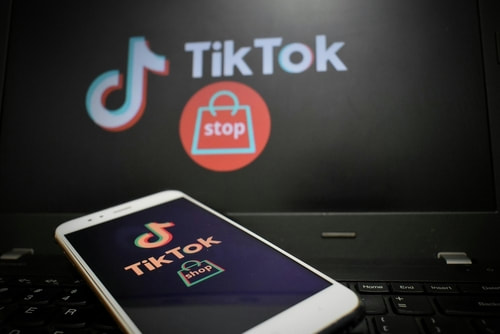





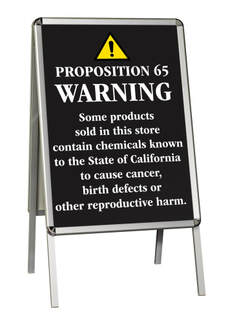



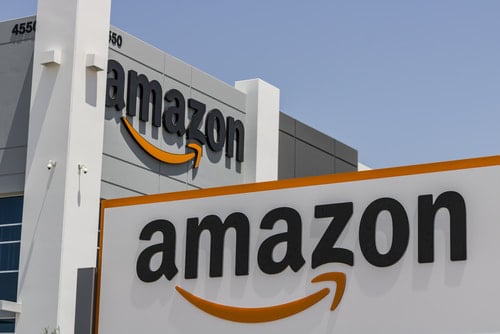



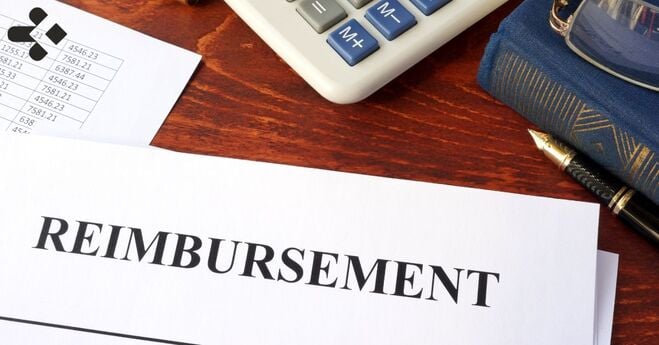
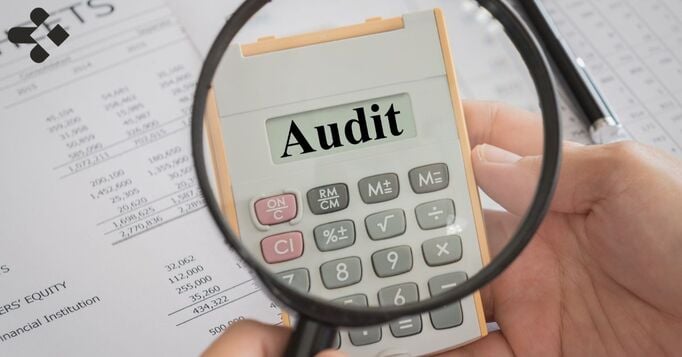


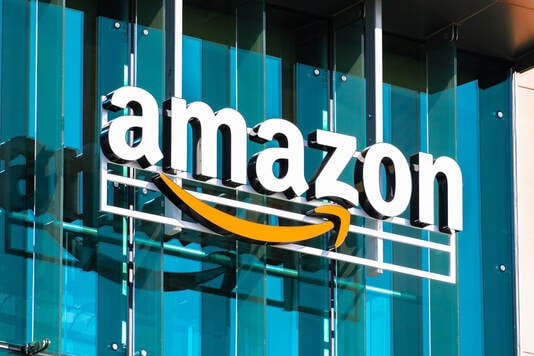
 RSS Feed
RSS Feed